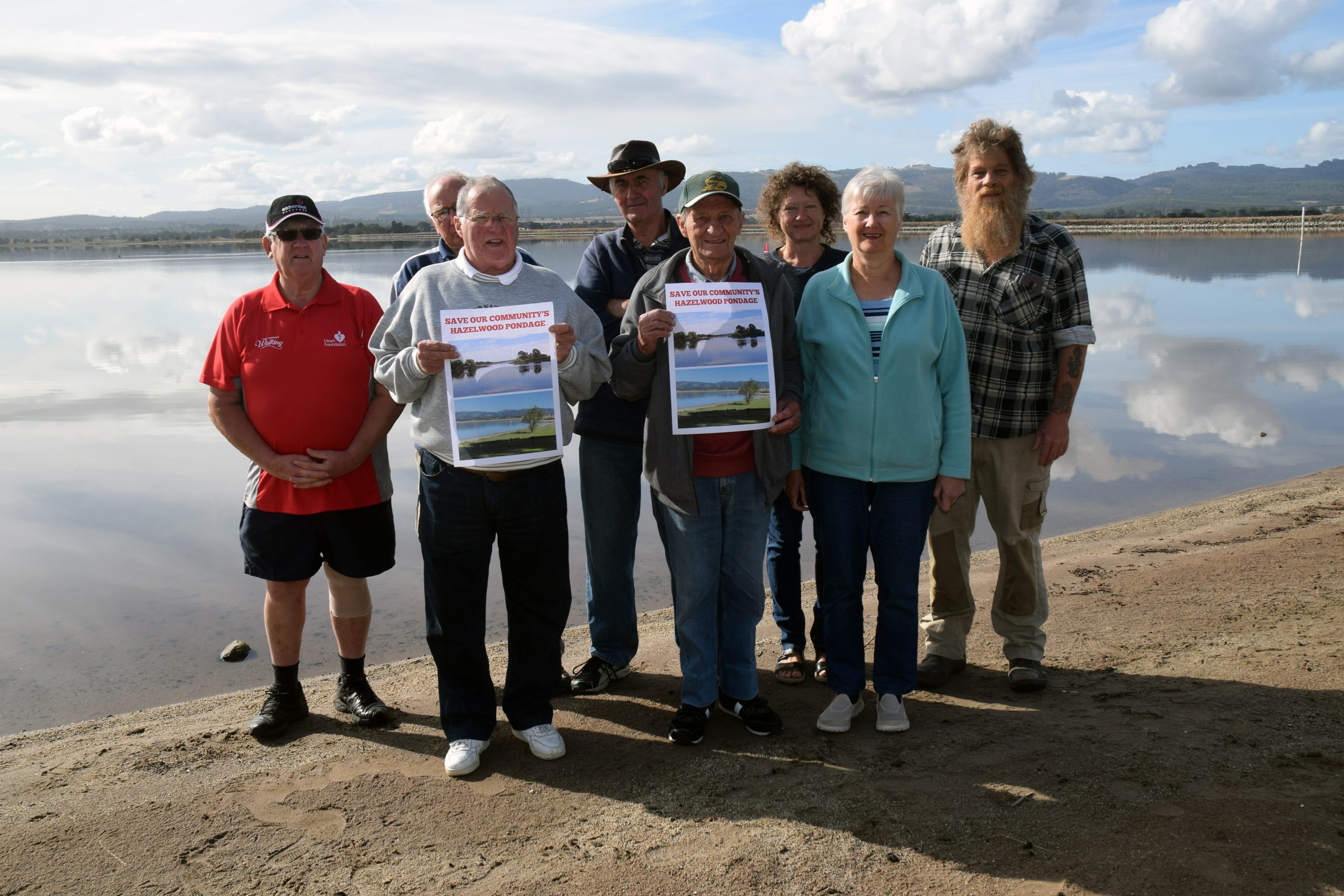
By LIAM DURKIN
CARLTON forward Harry McKay gave Blues fans something to cheer about this season, and capped off a breakout year by winning the Coleman Medal at the weekend.
McKay, from Warragul, slotted 58 goals, holding off last year’s winner Tom Hawkins (54 goals) and three time winner Jack Riewoldt (51).
It was a nervous fortnight for the 23-year-old, who missed the last two games through injury, meaning he could only watch and hope he had a big enough lead to stay at the top of the list.
With McKay now a Coleman Medallist, the Four Quarters team thought it would take a look at some other Gippsland players to have won the coveted award.
1. Kelvin Templeton.
BEFORE becoming a two-time Coleman Medallist, Kelvin Templeton was kicking bags of
goals for Traralgon.
Unbelievably, he kicked 104 goals for the Maroons in the Gippsland League in 1973 as a 16-year-old – a feat that will surely never be seen again.
Not surprisingly, Templeton was followed closely by Footscray scouts, who thought they had
struck gold as he fell into their recruiting zone.
Templeton joined the Bulldogs the following season and picked up where he left off, slotting six goals on debut.
In 1976, his stock continued to rise, as he ended the season with
82 goals.
An injury riddled 1977 campaign still saw him kick 40 goals in just nine games, in what acted a precursor for things to come.
With a full preseason under his belt, Templeton exploded in 1978, kicking 118 goals, and backed it up the following year with 91.
His 118 goals in 1978 is still the most by a Footscray player in a season.
During that year he had a day out, kicking 15 goals against St Kilda in Round 13.
At three quarter time he had seven to his name, before going on a frenzy in the last term and adding eight.
Some incredible footage of the game shows an era that must be completely foreign to the
current generation, as the crowd jumped the fence and surrounded Templeton as he lined up for goal number 15.
Police on horseback had to disperse the crowd, while Templeton’s 15th goal put him into the record books for the most ever kicked in a game for Footscray – a record that has stood to this day.
Amazingly, had it not been for errant kicking he could have easily broken the all-time record of 18 goals in a game set by Melbourne’s Fred Fanning.
Templeton’s return of 15.9 may have denied him that record, but did give him the distinction of having the most scoring shots in a game – another record that has
stood to this day.
Although Templeton couldn’t do much more individually, his goal kicking didn’t translate into many wins for the Bulldogs during the late 1970s, with the team running second last and ninth of 12 teams during his Coleman years.
However, he continued to put in stellar performances, so much so that in 1980 he won the Brownlow Medal after a 75-goal season, becoming the first forward to take home Charlie.
All in all Templeton kicked 593 goals from 177 games between 1974 to 1985 for Footscray and Melbourne.
He won two best and fairests at the Bulldogs and led their goal kicking every season from 1976 to 1980.
His legacy in the red, white and blue was ensured with a place in the Footscray team of the century at centre half forward.
Home town: Traralgon
Coleman Medal: 1978, 1979
Career goals: 593
Best effort: 15 vs St Kilda 1978
2. Bernie Quinlan.
THE man known as Superboot has already featured in Four Quarters, but given he won two Coleman Medals it is impossible to leave him out of this list.
To jog your memory, Quinlan played 366 games and kicked 817 goals for Footscray and Fitzroy.
As well as two Colemans he also won a Brownlow Medal and was inducted into the Australian Football Hall of Fame.
Like Templeton, Quinlan hailed from Traralgon, and was recruited to the Bulldogs in 1969. During his time at the Bulldogs he played 177 games before moving to Fitzroy for the 1978 season where he added a further 189.
Remarkably, Quinlan hit his peak at an age many players are on the way out. He won the
Brownlow Medal in 1981 as a 30-year-old, and back-to-back Colemans in 1983-84 after kicking 116 and 105 goals respectively.
Home town: Traralgon
Coleman Medal: 1983, 1984
Career goals: 817
Best effort: 11 vs North Melbourne 1984
3. Gary Ablett Senior.
AS much as we wanted to fit Jarryd Roughead in, there was no way we could go past Gary Ablett Senior.
For what it is worth though Roughead, from Leongatha, won a Coleman Medal in a premiership year for Hawthorn in 2013 – an outstanding effort considering he played in the same team as Lance Franklin.
Ablett Senior however won three Coleman Medals in succession from 1993 to 1995, reaching the ton in each of those seasons.
He is one of only five men to kick more than 1000 VFL/AFL goals, ending his career with 1031 majors from 248 games, mostly with Geelong.
Perhaps the most extraordinary thing about Ablett is the fact he was only moved to full forward at the age of 32. There can be no doubt he would have broken any number of goal kicking records if he made the move earlier.
Also extraordinary to think what would have been had Hawthorn not let him go after 10 games in the early 1980s.
Imagine Ablett Senior and Jason Dunstall in the same line-up.
Home town: Drouin
Coleman Medal: 1993, 1994, 1995
Career goals: 1031
Best effort: 14 vs Richmond 1989, 14 vs Essendon 1993 (losing side), 14 vs Sydney 1994
4. Bill Young.
ONLY two men have topped the AFL/VFL goal kicking in their debut year: one goes by the name of Coleman, and the other is Bill Young.
The relatively unknown Stratford sharpshooter only played six seasons for St Kilda between 1956 and 1961, but showed why he was so highly sought after, kicking 274 goals in 94 games with the Saints.
Young was a prolific goal kicker in country football, with his numbers even mesmeric by today’s standards.
He kicked 603 goals in 114 games for Stratford, including a ridiculous haul of 26 against the Sale RAAF team.
In the 1955 Gippsland League season he booted 136, and the year before a whopping 156.
Not surprisingly, he was chased by many AFL clubs, including legendary Melbourne coach Norm Smith, who even tried to talk him into tearing up the form he signed with St Kilda.
Young eventually made the move to the city at the age of 24 and had an immediate impact, winning what was then simply called the VFL leading goal kicker award a year out from the Gippsland League in 1956 when he slotted 56 goals.
The slender Young weighed just 73 kilograms, but combined his football smarts with a strong overhead mark and deadly accurate kick to be described by The Herald as ‘the best full forward in league football’.
Young’s career carried with it the romantic notion of a reluctant country boy who came to the city and became a star.
In addition to his goalkicking, Young also cemented his place in the game by inventing the kick that has become known as the ‘banana’ or ‘checkside’, which he perfected in the paddocks of Gippsland.
Not bad for a kid from Stratford.
Young died last year aged 88 following a long battle with dementia.
He was awarded his Coleman Medal retrospectively in 2004, after the AFL determined all winners of the leading goalkicker award from 1955 (the year after Coleman’s last
season) to 1980 (the year before the award was instituted) be recognised as Coleman Medallists.
Young presented the 2005 Coleman Medal to St Kilda’s Fraser Gehrig during that year’s All Australian team announcement.
A quite humorous side story regarding Coleman involves Richmond legend Jack Dyer, who after claiming “no player can be considered a champion unless he has played at least 100 games” was reminded that Coleman only played 98, to which he quickly replied “there is always an exception”.
Home town: Stratford
Coleman Medal: 1956
Career goals: 274
Best effort: 8 vs North Melbourne 1956










